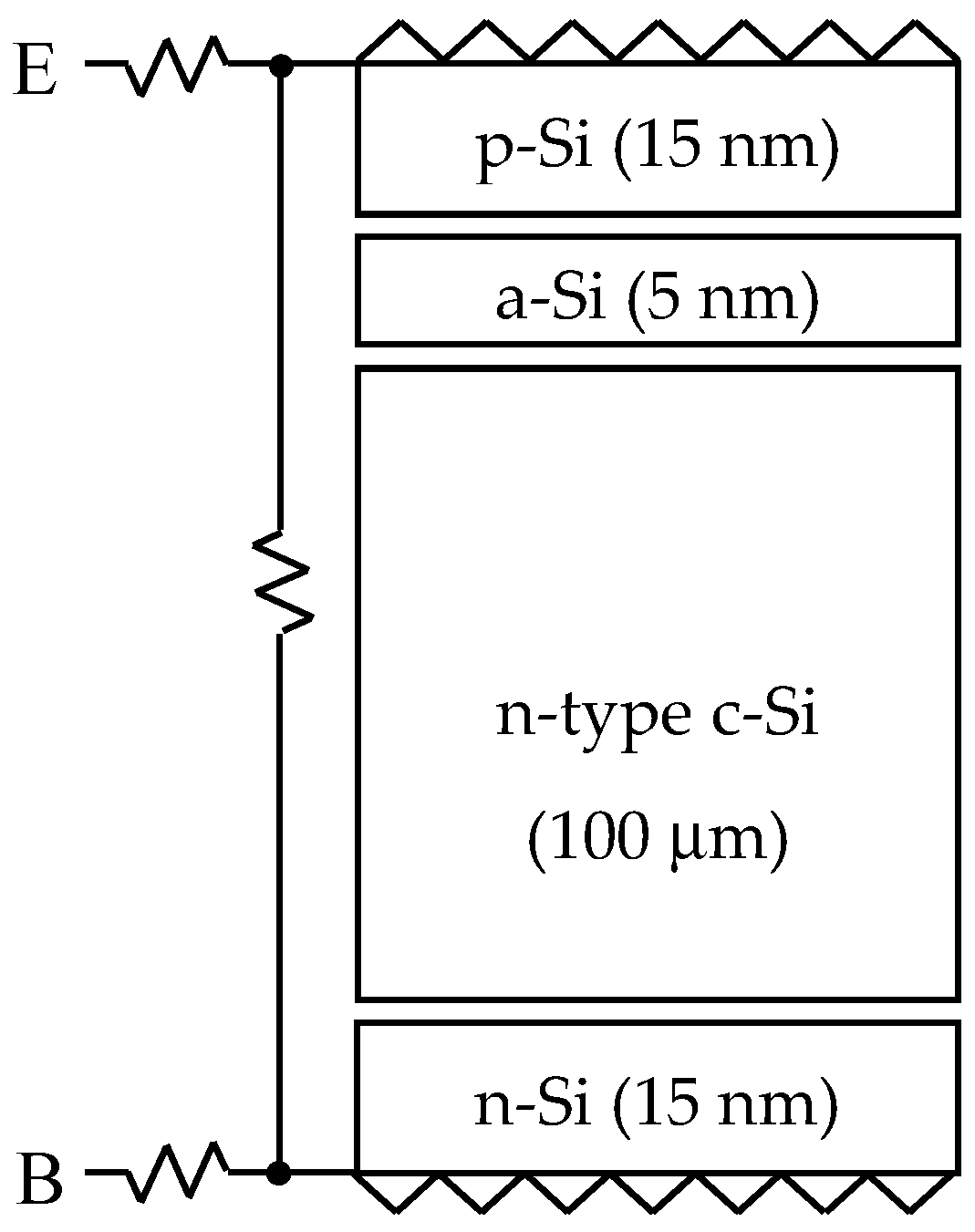
Rear-side point-contacts by inline thermal evaporation of aluminum. Numerical simulations of buried emitter back-junction solar cells. Modelling of grain boundary effects in nanocrystalline/multicrystalline silicon heterojunction solar cells. Sol Energ Mat Sol C, 2008, 92: 1500–1507įarrokh-Baroughi M, Sivoththaman S.

Defect states on the surfaces of a P-type crystalline silicon wafer and how they control the performance of a double heterojunction solar cell. J Appl Phys, 2010, 107: 054521ĭatta A, Damon-Lacoste J, Roca i Cabarrocas P, et al. Carrier transport and sensitivity issues in heterojunction with intrinsic thin layer solar cells on N-type crystalline silicon: A computer simulation study.

Rahmouni M, Datta A, Chatterjee P, et al. Loss analysis of emitter-wrap-through silicon solar cells by means of experiment and three-dimensional device modeling. Ulzhöfer C, Altermatt P P, Harder N P, et al. Because epitaxial CSiTF solar cells possess a device structure that is similar to crystalline silicon solar cells, the conclusions drawn in this paper are also applied to crystalline silicon solar cells to a certain extent, particularly to thin silicon solar cells which are the hottest research topic at present. In addition, this paper not only illustrates the simulation results but also explains their changes from the aspect of physical mechanisms. When the base minority carrier diffusion length is smaller, the optimal base thickness should be less than or equal to the base minority carrier diffusion length when the base minority carrier diffusion length is larger, the base minority carrier diffusion length should be at least twice the optimal base thickness. Through simulations, we found that the base is not the thicker the better, and the base minority carrier diffusion length must be taken into account when determining the optimal base thickness. They are the base minority carrier diffusion length, the diode dark saturation current and the front surface recombination velocity in order. Among various factors affecting the efficiency of the epitaxial CSiTF solar cell, we identified the three largest efficiency-affecting parameters.

On this basis, we comprehensively and systematically investigated the effect of physical parameters of back surface field (BSF) layer, base and emitter, electrical quality of crystalline silicon active layer, situation of surface passivation, internal recombination and p-n junction leakage on the optoelectronic performance of the epitaxial CSiTF solar cell. In order to make simulation results closer to the actual situation, we adopted a more realistic device structure and parameters. In this paper, we performed device simulation on the epitaxial CSiTF solar cell by using PC1D software. From performed calculations, we established that value of incident radiation (q) (and, as result, interior quantum efficiency of the photodiode) can be determined with 0.014% accuracy.Because crystalline silicon thin film (CSiTF) solar cells possess the advantages of crystalline silicon solar cells such as high efficiency and stable performance and those of thin film solar cells such as low cost and so on, it is regarded as the next generation solar cell technology, which is most likely to replace the existing crystalline silicon solar cell technology. Search for absolute minimum among many local minimums was done through method of consecutive approximations toward the minimum of mean square deviation.

A special algorithm to find the absolute minimum is presented in this article. Hill climbing algorithm was used to find local minimums. The problem consists of the fact that there is an infinite set of local minimums corresponding to the selected initial points in a 5-dimensional space of variables. Variation range represented almost one order of magnitude. For "experimental" curves we used dependencies derived from voltage-current characteristics calculated by PC1D with nominal parameters values. The shape of doping profile was figured in the form of complimentary error function. The inverse problem solution consisted in determination of following parameters of the photodiode: intensity of incident radiation (q), background doping value (n), peak value of front doping (N), depth factor (L) and front surface recombination velocity (S). It was necessary that reflection coefficient of the front surface of the photodetector is known. For our research we chose a silicon photodetector Hamamatsu 1337. This paper, for the first time, suggests a method of determining internal quantum efficiency of an opaque p+nn+ photodetector and some of its characteristics based on a comparison between experimental measurements of photodetector's voltage-current characteristics and characteristics calculated with PC1D.


 0 kommentar(er)
0 kommentar(er)
